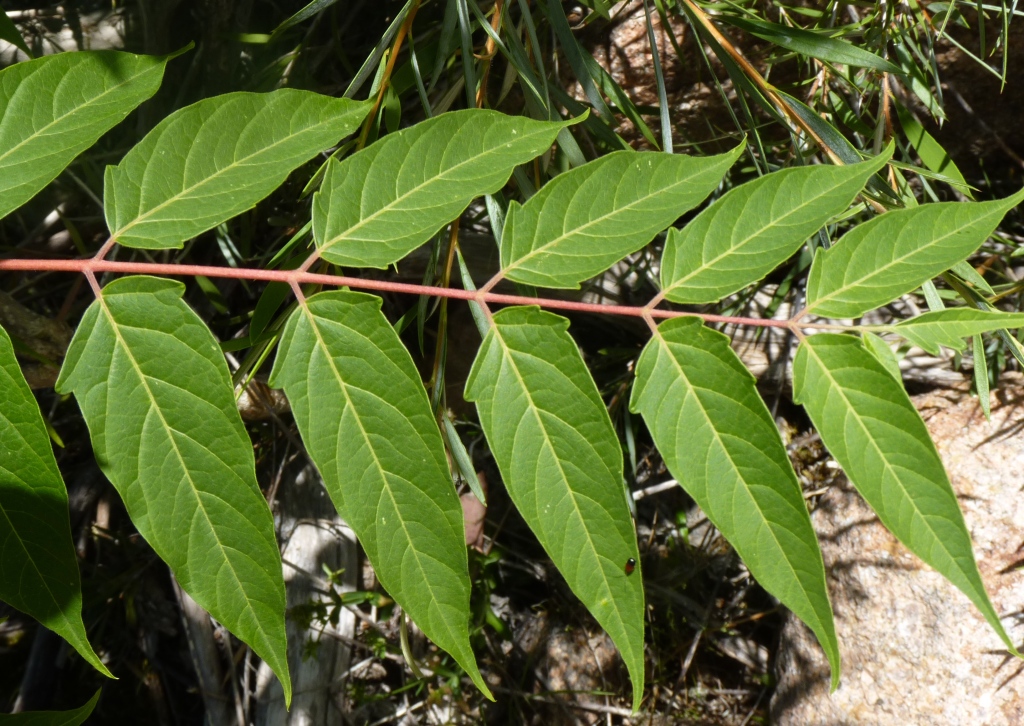Simaroubaceae
Evergreen or deciduous trees or shrubs; bark extremely bitter. Leaves mostly alternate, pinnately compound to unifoliolate, or simple; stipules absent in most taxa. Flowers in terminal or axillary racemes, or racemose panicles or dichasial cymes, unisexual (usually) or bisexual; sepals and petals 3–8 (normally 5) or sometimes petals lacking; sepals usually partially fused; petals free; stamens usually twice as many as sepals (rarely more), occasionally equal in number to sepals, filaments arising outside the annular nectary-disc (when present), often with a basal scale, anthers versatile, opening by longitudinal slits; ovary superior, 2–5(–8)-locular or carpels distinct, ovule 1 (rarely 2) per locule, styles 1 or as many as locules or carpels and then free or united. Fruit a capsule or samara, less often a drupe, berry or schizocarp.
A chiefly tropical family of c. 25 genera and c. 150 species; 4 genera and 7 species (1 naturalized) in Australia.
Walsh, N.G. (1999). Simaroubaceae. In: Walsh, N.G.; Entwisle, T.J., Flora of Victoria Vol. 4, Cornaceae to Asteraceae, pp. 152–153. Inkata Press, Melbourne.
 Spinning
Spinning


